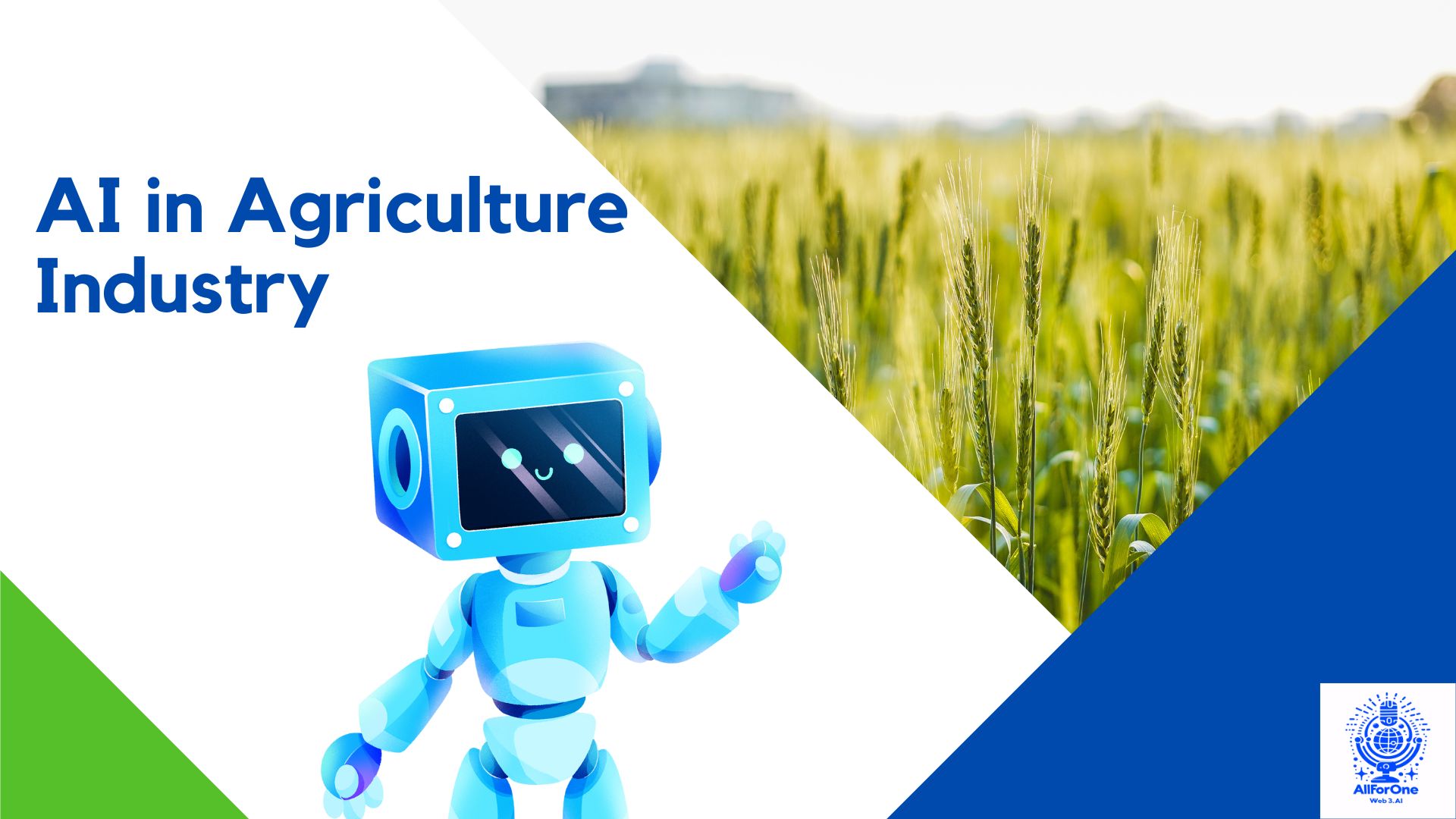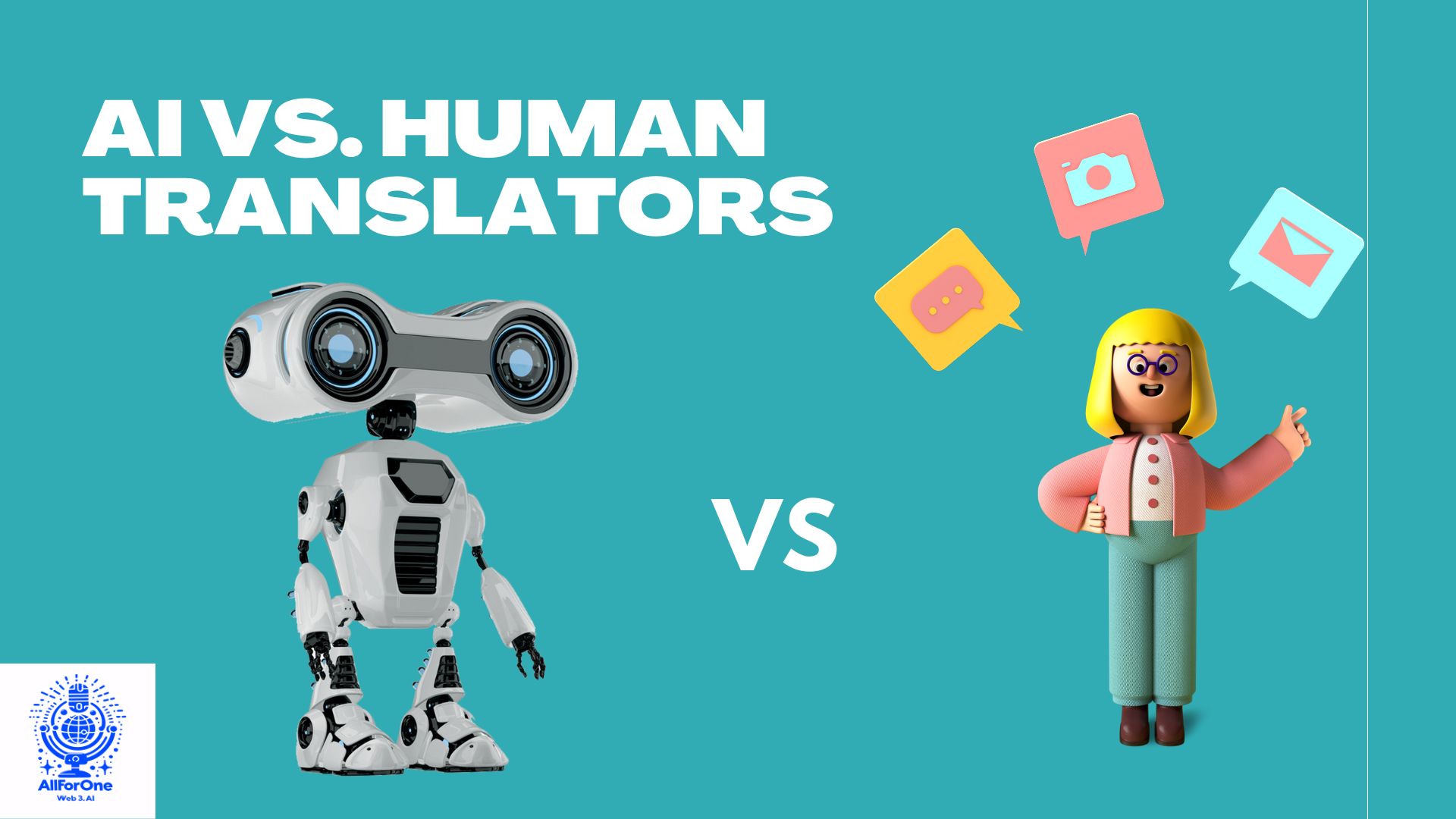Artificial Intelligence (AI) is revolutionizing various sectors, and agriculture is no exception. From precision farming to crop monitoring and predictive analytics, AI technologies are enhancing productivity, efficiency, and sustainability in agriculture. This article explores how AI is transforming the agriculture industry, providing farmers with advanced tools and insights to meet the growing demands of the global population.
The Need for Innovation in Agriculture
Growing Global Population
The world population is expected to reach nearly 10 billion by 2050, increasing the demand for food production. Traditional farming methods may not suffice to meet this demand, necessitating innovative solutions. With limited arable land and water resources, it becomes essential to maximize productivity on existing farmland. AI can help achieve this by optimizing every aspect of the agricultural process, from planting to harvesting.
Climate Change and Resource Management
Climate change poses significant challenges to agriculture, affecting crop yields and farming practices. Efficient resource management and adaptive strategies are crucial to sustain agricultural productivity in the face of these challenges. AI-driven solutions can provide real-time data and predictive analytics, helping farmers adapt to changing weather patterns and manage resources more effectively.
Economic Pressures on Farmers
Farmers face economic pressures, including fluctuating market prices, rising input costs, and labor shortages. AI offers potential solutions to mitigate these pressures by optimizing operations and reducing costs. By automating labor-intensive tasks and providing precise recommendations, AI can help farmers increase their profitability while reducing their reliance on manual labor.
AI-Powered Precision Farming
What is Precision Farming?
Precision farming involves using technology to monitor and manage agricultural processes with high accuracy. AI plays a critical role in collecting and analyzing data to support precision farming practices. By leveraging AI, farmers can make data-driven decisions that enhance crop yields, reduce waste, and minimize environmental impact.
AI in Soil and Crop Monitoring
AI-powered sensors and drones collect real-time data on soil conditions, moisture levels, and crop health. Machine learning algorithms analyze this data to provide actionable insights for farmers, helping them make informed decisions about irrigation, fertilization, and pest control. This level of precision ensures that crops receive the optimal amount of water and nutrients, leading to healthier plants and higher yields.
Case Study: Blue River Technology
Blue River Technology, a subsidiary of John Deere, uses AI to develop “See & Spray” technology. This system uses computer vision to identify and precisely apply herbicides to weeds, reducing chemical use and promoting sustainable farming practices. By targeting only the weeds and not the crops, this technology helps preserve the health of the soil and reduces the environmental impact of herbicides.
Predictive Analytics and Crop Management
AI in Predictive Analytics
Predictive analytics involves using AI to forecast future events based on historical data. In agriculture, predictive analytics can forecast crop yields, weather patterns, and pest outbreaks, enabling proactive management. By anticipating these factors, farmers can take preventive measures to protect their crops and ensure a successful harvest.
Benefits of Predictive Analytics in Agriculture
- Improved Crop Yields: By predicting optimal planting and harvesting times, farmers can maximize crop yields. AI models can analyze historical weather data and crop performance to recommend the best times for planting and harvesting.
- Risk Mitigation: Early detection of potential issues such as pest infestations or adverse weather conditions allows farmers to take preventive measures. This can significantly reduce crop losses and improve overall farm productivity.
- Resource Optimization: AI helps farmers allocate resources efficiently, reducing waste and increasing profitability. For example, AI can optimize irrigation schedules based on soil moisture levels and weather forecasts, ensuring that crops receive the right amount of water.
Case Study: Climate Corporation
Climate Corporation, acquired by Monsanto, uses AI to provide farmers with weather forecasts, soil data, and crop performance insights. Their FieldView platform helps farmers make data-driven decisions to improve crop productivity and sustainability. By integrating data from various sources, Climate Corporation offers comprehensive insights that enable farmers to optimize their operations.
Autonomous Farming Equipment
Rise of Autonomous Machinery
AI is driving the development of autonomous farming equipment, including tractors, harvesters, and planters. These machines operate with minimal human intervention, enhancing efficiency and reducing labor costs. Autonomous equipment can perform tasks such as planting, weeding, and harvesting with precision, allowing farmers to focus on more strategic aspects of their operations.
Benefits of Autonomous Equipment
- Increased Efficiency: Autonomous machines can work 24/7, increasing productivity and reducing downtime. This is particularly beneficial during peak farming seasons when timely operations are critical.
- Precision and Accuracy: AI-guided equipment ensures precise planting, watering, and harvesting, minimizing errors and maximizing yields. By using GPS and computer vision technologies, these machines can navigate fields accurately and perform tasks with high precision.
- Labor Savings: Autonomous equipment reduces the reliance on manual labor, addressing labor shortages and reducing operational costs. This is especially important in regions where finding skilled labor is a challenge.
Case Study: CNH Industrial
CNH Industrial, the parent company of brands like Case IH and New Holland, has developed autonomous tractors equipped with AI and machine learning technologies. These tractors can perform various tasks, such as plowing, planting, and spraying, without human intervention. By using AI to optimize their operations, these autonomous tractors help farmers increase their efficiency and reduce their labor costs.
AI in Supply Chain Management
Streamlining the Agricultural Supply Chain
AI enhances supply chain management by optimizing logistics, reducing waste, and improving traceability. From farm to table, AI ensures that agricultural products reach consumers efficiently and sustainably. By analyzing data from various points in the supply chain, AI can identify inefficiencies and recommend improvements.
Benefits of AI in Supply Chain Management
- Reduced Waste: AI helps minimize food waste by optimizing storage and transportation conditions. For example, AI can predict the shelf life of perishable products and recommend the best storage conditions to extend their freshness.
- Improved Traceability: AI enables real-time tracking of products, ensuring transparency and safety in the supply chain. By using blockchain and AI technologies, companies can track the origin and journey of food products, ensuring that they meet safety and quality standards.
- Cost Savings: Efficient supply chain management reduces costs and enhances profitability for farmers and distributors. By optimizing logistics and reducing waste, AI can help companies lower their operating costs and increase their margins.
Case Study: IBM Food Trust
IBM Food Trust uses blockchain and AI technologies to improve traceability and transparency in the food supply chain. By providing real-time data on the origin and journey of food products, IBM Food Trust helps reduce waste, ensure food safety, and build consumer trust. This technology also helps companies comply with regulatory requirements and manage recalls more effectively.
AI for Sustainable Agriculture
Promoting Sustainable Farming Practices
AI supports sustainable agriculture by optimizing resource use, reducing chemical inputs, and enhancing soil health. Sustainable farming practices are essential for preserving ecosystems and ensuring long-term agricultural productivity. AI can help farmers adopt these practices by providing insights and recommendations based on data analysis.
Benefits of Sustainable Agriculture
- Environmental Protection: Sustainable practices reduce the environmental impact of farming, preserving biodiversity and reducing pollution. By minimizing the use of chemicals and optimizing resource use, sustainable agriculture helps protect natural ecosystems.
- Economic Viability: Sustainable farming ensures long-term profitability by maintaining soil health and reducing input costs. By improving soil fertility and reducing dependency on expensive inputs, sustainable practices help farmers achieve financial stability.
- Social Responsibility: Sustainable agriculture promotes the well-being of farming communities and contributes to food security. By supporting local economies and ensuring a stable food supply, sustainable agriculture benefits society as a whole.
Case Study: FarmBot
FarmBot is an open-source, AI-powered robotic farming system designed for small-scale, sustainable agriculture. It automates planting, watering, and weeding, making sustainable farming accessible and efficient for home gardeners and small farmers. By using AI to optimize these tasks, FarmBot helps users grow healthy and productive gardens with minimal environmental impact.
Emerging AI Technologies in Agriculture
AI-Driven Plant Breeding
AI is revolutionizing plant breeding by accelerating the development of new crop varieties with improved traits. Traditional plant breeding methods can be time-consuming and labor-intensive, but AI can streamline the process by analyzing genetic data and predicting desirable traits.
- Genomic Selection: AI algorithms analyze genomic data to identify genes associated with desirable traits, such as drought resistance, disease resistance, and higher nutritional value. This allows breeders to select parent plants that are more likely to produce offspring with these traits.
- Phenotyping: AI-powered imaging systems and sensors can assess the physical characteristics of plants, such as growth rate and leaf size, more accurately and efficiently than manual methods. This data is used to evaluate the performance of different plant varieties and select the best candidates for breeding.
Advanced Robotics in Agriculture
The development of sophisticated agricultural robots is another exciting trend in AI technology. These robots are capable of performing complex tasks that require dexterity and precision, such as selective harvesting and fruit picking.
- Harvesting Robots: AI-driven harvesting robots use computer vision and machine learning to identify ripe fruits and vegetables. They can navigate fields, pick produce without damaging it, and sort it based on quality. This technology is particularly valuable for labor-intensive crops like strawberries and tomatoes.
- Weeding Robots: AI-powered weeding robots use sensors and cameras to distinguish between crops and weeds. They can remove weeds mechanically or apply targeted herbicides, reducing the need for chemical inputs and improving soil health.
AI-Powered Market Analysis
AI can also help farmers navigate the complexities of the agricultural market by providing insights into consumer preferences, price trends, and demand fluctuations.
- Price Forecasting: AI models analyze historical market data and current trends to predict future prices for various crops. This helps farmers make informed decisions about when to sell their produce to maximize profits.
- Consumer Insights: AI can analyze data from social media, surveys, and sales records to identify emerging consumer preferences and trends. This information allows farmers to adapt their production to meet market demands and stay competitive.
The Role of Policy and Regulation in AI Adoption
Encouraging Innovation
Governments and regulatory bodies play a crucial role in promoting the responsible use of AI in agriculture. Policies and regulations should support research and development of AI technologies, providing funding and incentives for innovation.
- Research Grants: Governments can offer grants and subsidies to support AI research in agriculture. This funding can help universities, research institutions, and private companies develop new AI solutions that address the challenges faced by farmers.
- Innovation Hubs: Establishing innovation hubs and incubators can foster collaboration between researchers, startups, and established companies. These hubs can provide resources and mentorship to help bring AI innovations to market.
Ensuring Fair Access
To ensure that all farmers benefit from AI technologies, policies should promote equitable access to AI tools and resources.
- Training Programs: Governments and organizations can offer training programs to help farmers develop the skills needed to use AI technologies effectively. These programs should be accessible to farmers of all sizes and in all regions.
- Subsidies and Incentives: Providing subsidies and incentives for the adoption of AI technologies can help small-scale and resource-limited farmers access these tools. This support can help bridge the gap between large agribusinesses and smaller farms.
Protecting Data Privacy
Data privacy is a critical concern in the adoption of AI in agriculture. Policies and regulations should establish guidelines for data privacy and security to protect farmers’ information.
- Data Ownership: Farmers should retain ownership of the data collected on their farms. Clear guidelines should define how data can be used and shared, ensuring that farmers have control over their information.
- Security Standards: Regulations should establish security standards for AI systems to protect against data breaches and cyberattacks. These standards should be regularly updated to address emerging threats.
AI Technologies for Visual Content
Enhancing Understanding with Visuals
Incorporating images and visual content can significantly enhance the understanding of AI technologies in agriculture. Visuals can provide a clearer picture of how AI tools and techniques are applied on the farm.
Image Section Ideas
- Precision Farming Tools: Images of AI-powered sensors, drones, and monitoring systems used in precision farming. These visuals can show how data is collected and analyzed to optimize farming practices.
- Autonomous Machinery: Photos of autonomous tractors, harvesters, and planters in action. These images can illustrate how AI-driven equipment performs tasks with precision and efficiency.
- AI-Powered Robots: Pictures of agricultural robots, such as harvesting and weeding robots, showcasing their capabilities and benefits.
Conclusion
AI is transforming the agriculture industry, offering innovative solutions to meet the challenges of feeding a growing global population, managing climate change, and ensuring sustainable farming practices. From precision farming and predictive analytics to autonomous machinery and supply chain optimization, AI technologies are enhancing productivity, efficiency, and sustainability in agriculture.
As we move forward, it is essential to address the challenges and ethical considerations associated with AI adoption in agriculture. By fostering innovation, ensuring equitable access, and promoting sustainable practices, we can harness the full potential of AI to create a more resilient and prosperous agricultural sector.
Incorporating AI into agriculture not only improves productivity but also ensures that farming practices are sustainable and environmentally friendly. The integration of AI in agriculture is not just a technological advancement but a necessary step towards a more sustainable and food-secure future.
As AI continues to evolve, the agriculture industry must remain adaptable and forward-thinking. By embracing AI technologies and leveraging their potential, farmers can overcome the challenges they face and build a more sustainable and productive future for agriculture.




